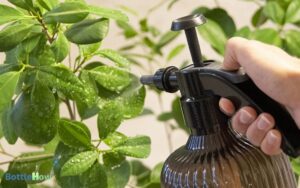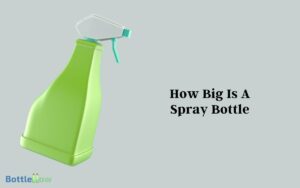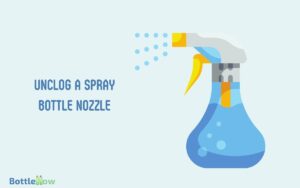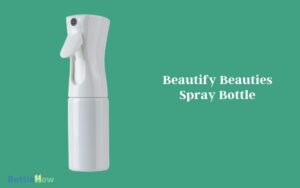Can You Put Vinegar in a Plastic Spray Bottle? Yes!
Yes, you can put vinegar in a plastic spray bottle, but you need to choose the right type of plastic to guarantee it holds up over time.
PET or HDPE plastics are your best bets, as they resist the high acidity of vinegar, preventing the bottle from degrading and contaminating your vinegar with plastic byproducts. Check the bottom of the bottle for the recycling codes #1 (PET) or #2 (HDPE) to confirm its material.
Avoid using bottles made from PVC, as these might not withstand the acidity. Store your vinegar solution in a cool, dry place to extend the lifespan of the bottle and its contents.
There’s much more you might find useful about maintaining the longevity and safety of your vinegar solutions.
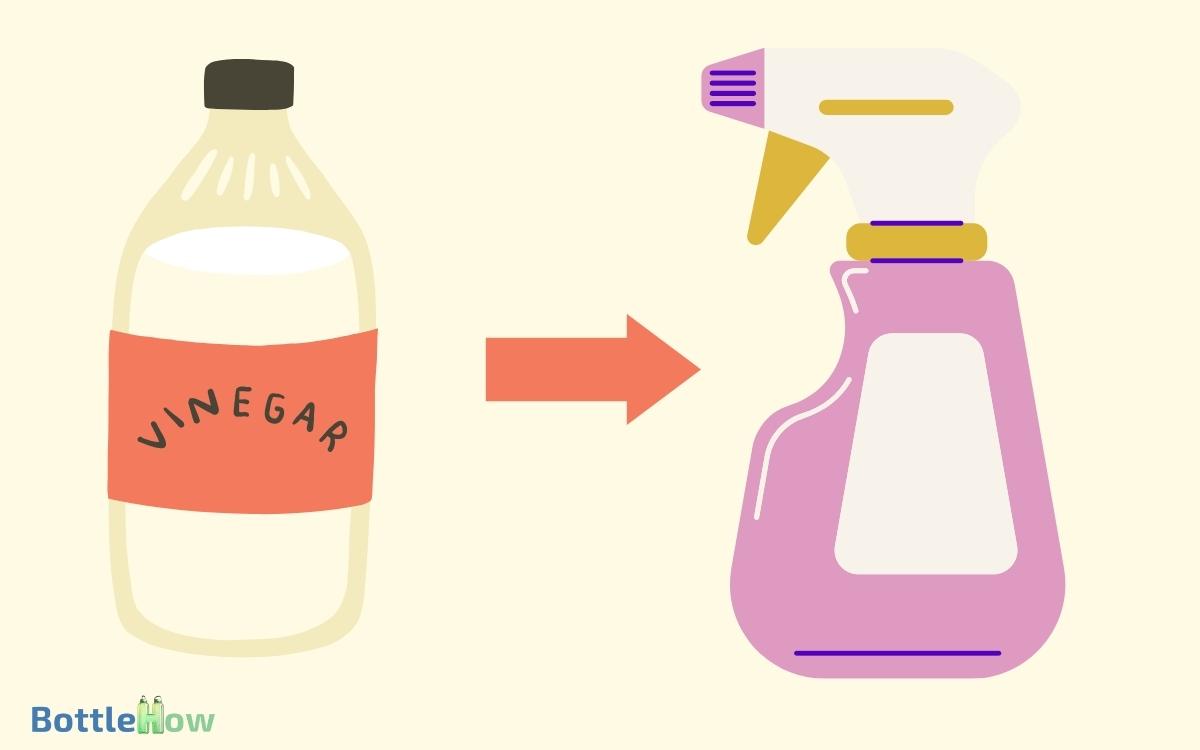
Key Takeaways
Understanding Vinegar’s Acidity
Vinegar’s acidity, primarily composed of acetic acid, can range from 4% to 8%, making it a potent substance for various uses.
You should understand that this level of acidity, while important for cleaning and cooking, requires careful handling and thought when choosing storage solutions.
Its corrosive nature means it can interact with different materials, potentially leading to degradation or contamination if not stored properly.
When using vinegar, always make sure you’re using it in a safe manner, especially when diluting it for various applications.
It’s vital to take into account the concentration and ensure compatibility with the materials you’re using in conjunction with vinegar to maintain safety and effectiveness in your service to others.
Types of Plastic Compatibility
When selecting a plastic spray bottle for vinegar storage, it’s crucial to consider the type of plastic, as not all are resistant to acetic acid.
Plastics like PET (polyethylene terephthalate) and HDPE (high-density polyethylene) are generally more resilient and can handle acidic contents better than others.
These materials are less likely to degrade when in contact with vinegar, guaranteeing that the integrity of the bottle remains intact over time.
You’ll want to avoid plastics such as PVC (polyvinyl chloride), which may not hold up as well. Always check the recycling code on the bottle for PET and #2 for HDPE to make sure you’re selecting the safest option for your needs.
Chemical Reaction Concerns
When you consider storing vinegar in a plastic spray bottle, you must be aware of potential compatibility issues. Certain types of plastic can degrade when exposed to acidic solutions like vinegar, risking the integrity of the container.
This degradation not only compromises the bottle’s durability but also raises concerns about the leakage of harmful plastic byproducts into the vinegar.
Vinegar Compatibility Issues
Understanding the chemical interactions between vinegar and plastic is vital, as certain plastics may degrade when exposed to acidic solutions. When you’re aiming to serve others effectively, it’s important to know which materials are safe and sustainable.
Consider the following points:
- Safety First: Protect yourself and others from potential chemical leaks that could occur if the plastic isn’t compatible with vinegar.
- Longevity of Tools: Using the correct materials ensures that your spray bottles last longer and remain effective, saving resources and energy.
- Environmental Impact: Choosing the right plastics reduces the risk of pollution from degraded materials, demonstrating care for the planet and its inhabitants.
Always opt for materials that align with these priorities to guarantee safety and efficiency in your service.
Plastic Degradation Risk
You should be aware that certain plastics may break down when exposed to the acidic nature of vinegar, posing risks to both usability and safety.
This degradation can release harmful chemicals into the solution, which could be detrimental if you’re using the spray for cleaning food areas or toys.
It’s important to check the plastic type of your bottle; look for PET (polyethylene terephthalate) or HDPE (high-density polyethylene), which are generally more resistant to acidic substances. Avoid using plastics labeled as PVC or PS, which can degrade more easily.
Always consider the longevity and safety of the products you use, especially when they might come into contact with vulnerable groups like children or pets.
Safe Storage Practices
When storing vinegar in a plastic spray bottle, you must first check the chemical compatibility of the plastic with vinegar to prevent any degradation.
It’s essential to use proper sealing techniques to make sure that the vinegar remains potent and that there are no leaks which could lead to spills or accidents.
Always store the bottle in a cool, dry place away from direct sunlight to maintain the efficacy of the vinegar.
Chemical Compatibility Check
Before storing vinegar in a plastic spray bottle, it’s crucial to verify the chemical compatibility of the plastic to prevent potential degradation and leaks.
Choosing the right type of plastic guarantees you’re safeguarding the integrity of both the solution inside and the environment around you.
- Preserve Quality: Confirming the plastic can handle the acidity of vinegar protects the purity and efficacy of your solution.
- Avoid Contamination: Using incompatible plastics could lead to harmful chemical reactions, risking your health and that of others.
- Maintain Safety: Preventing bottle degradation reduces the risk of leaks that can damage surfaces or create slippery hazards.
Always check the recycling symbol on the bottle and consult with manufacturers or reliable resources to guarantee safety and effectiveness.
Proper Sealing Techniques
After confirming your plastic spray bottle is chemically compatible with vinegar, it’s important to focus on how well the bottle is sealed to maintain the solution’s effectiveness and safety.
You’ll want to make sure the spray bottle’s cap and nozzle fit tightly to prevent any leaks or exposure to air, which could degrade the vinegar. Additionally, storing the bottle in a cool, dark place will help maintain the vinegar’s potency over time. If you’re wondering, can you spray vinegar on different surfaces, it’s best to check the material’s compatibility first to avoid any unwanted damage. Regularly cleaning the nozzle will also prevent clogs and ensure an even spray each time you use it.
It’s vital to check the gasket or seal within the cap; if it’s worn or missing, replace it immediately. Always tighten the cap securely after each use to avoid evaporation and contamination.
For added precaution, store the bottle in a cool, dark place away from direct sunlight. This careful attention to sealing and storage not only preserves the vinegar’s properties but also ensures safety in its application.
Choosing the Right Bottle
Selecting the appropriate plastic bottle for vinegar storage is vital, as not all plastics are created equal and some may degrade over time. When you’re deciding on a bottle, it’s important to take into account the type of plastic it’s made from.
Here are some key aspects to keep in mind:
- Look for HDPE (High-Density Polyethylene) bottles: These are known for their strength and chemical resistance.
- Avoid plastics with recycling codes 3, 6, and 7: These may release harmful chemicals when in contact with vinegar.
- Check for UV resistance: If your vinegar will be exposed to sunlight, make sure the plastic can withstand UV rays without degrading.
Choosing wisely demonstrates your dedication to safety and quality in serving others.
Long-Term Storage Tips
To guarantee the longevity of vinegar stored in plastic spray bottles, it’s crucial to consider several long-term storage tips.
First, you should always make sure the cap is tightly sealed after each use to prevent air exposure that can degrade the vinegar.
It’s also wise to store the bottle in a cool, dark area away from direct sunlight as UV rays can break down the vinegar’s chemical structure.
Additionally, check the bottle periodically for any signs of damage or degradation. Cracks or warping in the plastic can lead to leaks or contamination.
Alternative Storage Options
Considering the potential issues with plastic, you might explore glass or stainless steel containers as more durable, non-reactive alternatives for storing vinegar. These options not only guarantee the integrity of the vinegar but also contribute to a safer environment.
When selecting the right container, consider the following:
- Glass Bottles: They don’t leach chemicals, preserving the purity of the vinegar, and can be easily sterilized.
- Stainless Steel Containers: These are robust and highly resistant to corrosion, making them a long-lasting choice.
- Ceramic Vessels: Though less common, they offer an aesthetic appeal and maintain vinegar’s acidity without degradation.
Each alternative serves to keep your vinegar effective and safe, aligning with your commitment to thoughtful, conscientious service.
Effective Vinegar Cleaning Recipes
For an eco-friendly and effective household cleaner, mix equal parts of vinegar and water in a spray bottle, adding a few drops of essential oil for a pleasant scent. This simple solution works wonders on glass surfaces, leaving them streak-free.
If you’re tackling tougher grime in the kitchen, particularly on appliances and countertops, enhance the mixture’s potency by incorporating a teaspoon of baking soda.
However, it’s crucial to test this enhanced solution on a small, inconspicuous area first to verify it doesn’t mar the surface.
For bathroom cleaning, add a half-cup of vinegar to the toilet bowl and let it sit overnight. This helps dissolve lime deposits and other stains. In the morning, a quick scrub will make your toilet sparkle.
Preventing Damage and Leaks
Guarantee your spray bottle’s durability and prevent leaks by selecting one made of high-quality, vinegar-resistant plastic. When serving others by maintaining clean environments, you don’t want to worry about your tools failing.
To make sure your efforts are as effective and efficient as possible, follow these guidelines:
- Check the material: Confirm the plastic is marked as PET or HDPE, which are known to withstand acidic contents like vinegar.
- Inspect regularly: Look for any signs of wear or stress cracks which could lead to leaks. Promptly replace if compromised.
- Store properly: Keep your spray bottle in a cool, dry place to avoid heat exposure, which can weaken the plastic over time.
Taking these steps will help you serve others without interruption.
Conclusion
When storing vinegar in a plastic spray bottle, always choose one made from PET plastic to prevent chemical reactions and leakage.
For instance, a homeowner once reported rapid degradation of a non-PET spray bottle used for vinegar, leading to spills and damage.
Make sure the bottle is kept in a cool, dark place to avoid degradation over time. Opting for glass bottles can be a safer alternative, especially for long-term storage, maintaining the vinegar’s effectiveness in your cleaning recipes.

